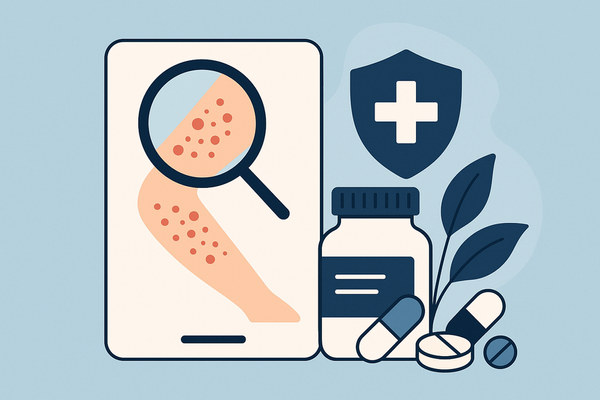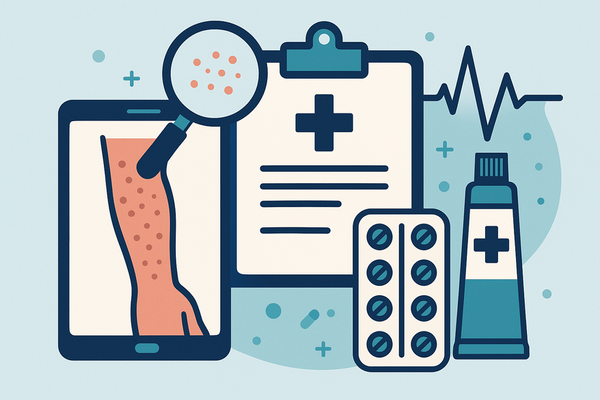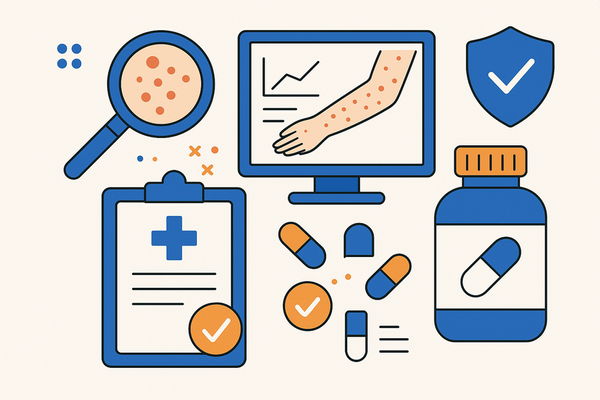Understanding Zinc Deficiency Skin Issues: Causes, Symptoms & Solutions
Explore causes, symptoms, and solutions for zinc deficiency skin issues. Learn about zinc's role in skin health and effective management strategies.
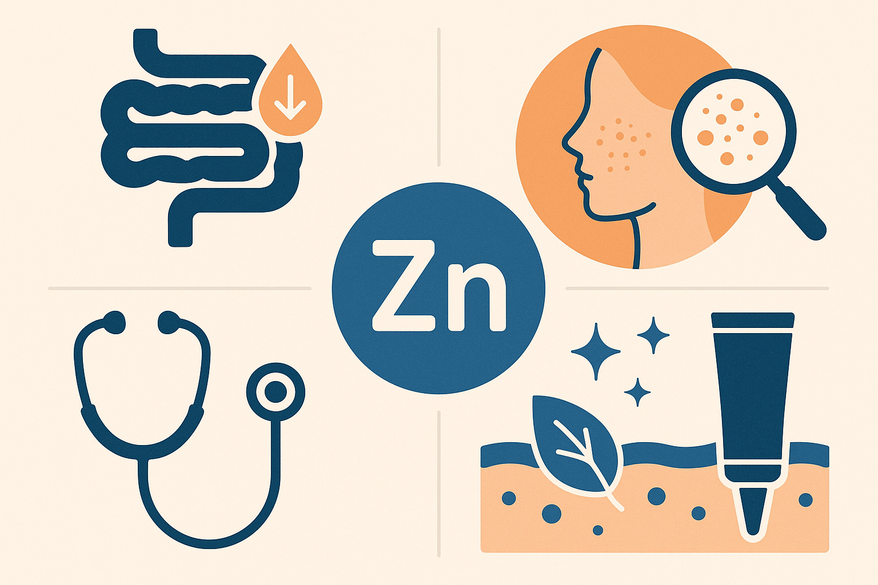
Estimated reading time: 12 minutes
Key Takeaways
- Zinc is an essential trace mineral that supports immune function, accelerates wound healing, and drives skin regeneration.
- Zinc deficiency often first appears in the skin as rashes, slow-healing wounds, and inflammatory lesions.
- Common causes include inadequate dietary intake, malabsorption disorders, and increased physiological demands.
- Management involves dietary optimization, supplementation when needed, and gentle skincare practices.
- Early detection and intervention can restore skin health within weeks.
Table of Contents
- Key Takeaways
- Table of Contents
- 1. Overview of Zinc’s Role in the Body
- 2. Understanding Zinc Deficiency
- 3. Connection Between Zinc Deficiency and Skin Issues
- 4. Specific Skin Issues Associated with Zinc Deficiency
- 5. Preventative Measures and Management
- 6. Conclusion
- 7. Additional Resources
1. Overview of Zinc’s Role in the Body
Zinc (atomic number 30) is a cofactor for over 300 enzymes. It underpins:
- Immune support: Modulates T-cell function and cytokine production, bolstering defenses and reducing inflammation.
- Wound healing: Drives collagen synthesis, epithelialization, and tissue remodeling to speed skin repair.
- Cell division & regeneration: Regulates DNA/RNA synthesis and keratinocyte proliferation for constant epidermal renewal.
Why skin is sensitive to zinc levels:
- Rapid turnover (renewing every ~28 days) demands zinc-dependent enzymes.
- Metalloproteinases clear damaged tissue, enabling new layer formation.
- Deficiency weakens barrier function, leading to dryness, infections, and rashes.
Sources: Healthdirect Australia – Zinc Deficiency overview, Skin Problems & Zinc Supply
2. Understanding Zinc Deficiency
Zinc deficiency arises when stores cannot meet the body’s demands, often manifesting first in the skin.
Common causes:
- Inadequate dietary intake: Low consumption of meat, seafood, dairy, nuts, and whole grains.
- Malabsorption: Conditions like Crohn’s disease or celiac disease impair uptake.
- Increased requirements: Pregnancy, childhood growth spurts, and chronic illnesses.
Risk factors for skin manifestations:
- Vegetarian or restricted diets: Phytates reduce plant-based zinc bioavailability.
- Gastrointestinal disorders: Ulcerative colitis, short bowel syndrome, or chronic diarrhea.
- Older adults: Reduced appetite, dental issues, and medications hinder intake and absorption.
Source: Healthdirect Australia – Zinc Deficiency overview
3. Connection Between Zinc Deficiency and Skin Issues
Clinical research reveals clear links between low zinc and various dermatological problems:
- Eczematous eruptions unresponsive to steroids often improve only after zinc supplementation.
- Delayed wound healing and higher infection rates in deficient individuals—wounds may take twice as long to close.
- Chronic inflammation in atopic dermatitis and psoriasis due to dysregulated cytokine activity.
Mechanisms:
- Stalled DNA/RNA synthesis delays epidermal renewal.
- Weakened tight junctions compromise barrier integrity.
- Overactive inflammatory signals damage healthy tissue and prolong flare-ups.
Sources: Healthdirect Australia – Zinc Deficiency overview, PMC5852775, Frontiers in Medicine
4. Specific Skin Issues Associated with Zinc Deficiency
A. Acne and Inflammatory Skin Conditions
Acne vulgaris involves inflammation of the pilosebaceous unit. Zinc:
- Regulates sebum production to prevent pore clogging.
- Inhibits pro-inflammatory cytokines (IL-6, TNF-α) to reduce lesion severity.
Deficiency worsens breakout frequency and delays healing. Trials show 30 mg/day zinc reduced lesion counts by up to 50%.
Source: Skin Problems & Zinc Supply
B. Dermatitis and Eczema
Atopic eczema presents as red, itchy patches. Zinc-deficiency rash features:
- Periorificial cracking around mouth, eyes, and nose.
- Acral cracking on hands and feet.
- Resistance to emollients and steroids but rapid response to zinc therapy.
Infants improved within 1–2 weeks on 5 mg/kg/day zinc; adults often see relief in 10–14 days.
Sources: Healthdirect Australia – Zinc Deficiency overview, Frontiers in Medicine
C. Other Skin Concerns
- Slow wound healing: May require 14–21 days or more instead of the typical 7–10 days.
- Increased infections: Bacterial (Staph) and fungal (Candida) due to a weakened barrier.
- Hair loss and brittle nails: Zinc is vital for keratin structure.
- Acrodermatitis: Blistered patches on hands, feet, and around orifices.
- Chronic paronychia and glazed skin appearance.
Sources: Healthdirect Australia – Zinc Deficiency overview, Skin Problems & Zinc Supply, PMC5852775, Frontiers in Medicine
For quick, AI-driven rash analysis, try the Skin Rash App:
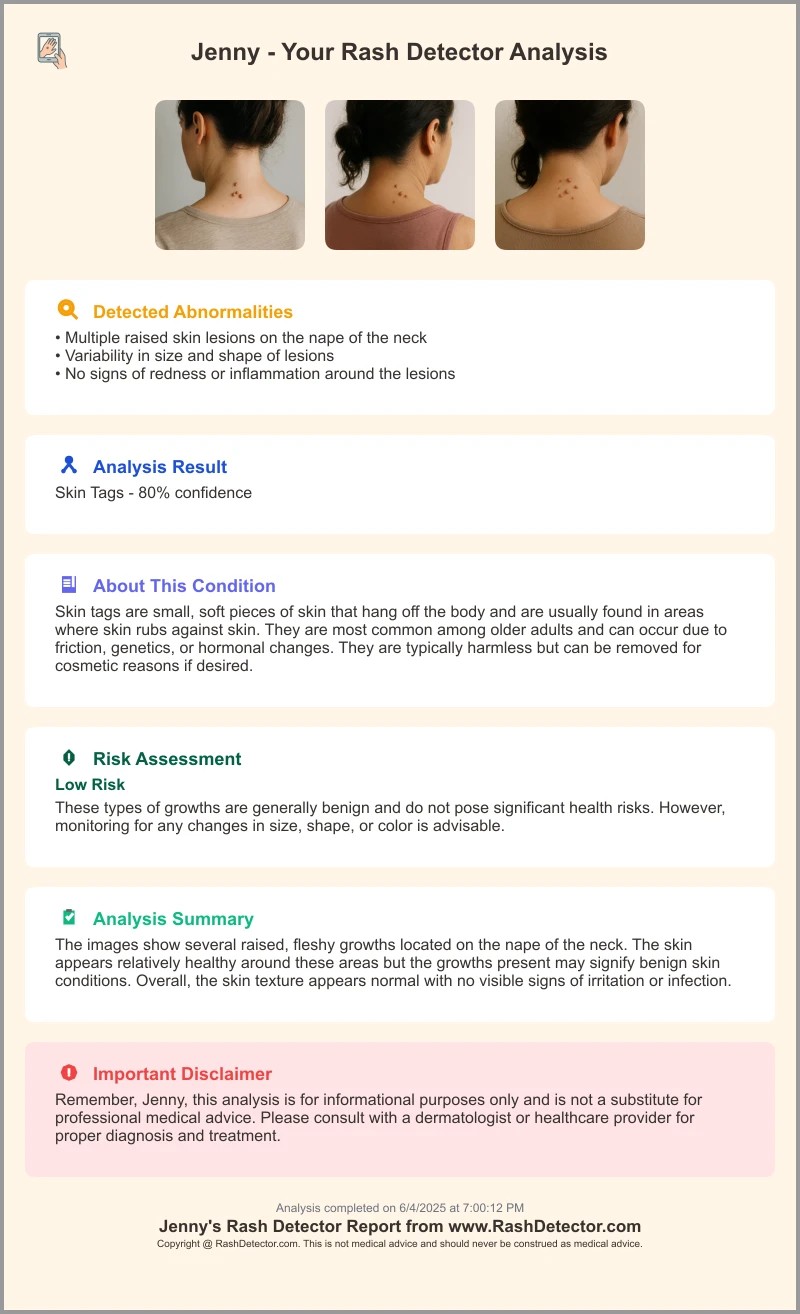
5. Preventative Measures and Management
A. Nutritional Recommendations
Aim for a varied diet rich in zinc:
- Oysters: 74 mg per 3 oz serving.
- Lean beef: 5 mg per 3 oz.
- Poultry: 2–3 mg per 3 oz.
- Dairy: 1 mg per cup of milk or cheese.
- Legumes: 1–3 mg per cup (soak or sprout to reduce phytates).
- Nuts & seeds: 1–2 mg per ounce.
- Whole grains: 1–3 mg per cup (ferment or soak for better absorption).
RDA: 11 mg/day for men; 8 mg/day for women (higher in pregnancy/lactation).
Sources: Healthdirect Australia – Zinc Deficiency overview, Skin Problems & Zinc Supply
B. Supplementation
Consider supplements if you have:
- Confirmed deficiency via blood test.
- Persistent skin issues unresponsive to topical treatments.
Common forms: zinc gluconate, sulfate, acetate. Typical dose: 15–30 mg elemental zinc daily (upper limit ~40 mg/day). Long-term high doses can cause copper deficiency and GI upset—use under medical supervision.
Source: Healthdirect Australia – Zinc Deficiency overview
C. Lifestyle and Skincare Tips
- Use gentle, pH-balanced cleansers; avoid harsh exfoliants and fragrances.
- Apply broad-spectrum sunscreen daily to support the barrier.
- Stay hydrated to maintain skin elasticity and repair capacity.
- Manage stress—stress hormones can impair nutrient absorption.
- Treat underlying GI issues (e.g., celiac disease) to improve zinc uptake.
6. Conclusion
Zinc is central to skin health—fueling immune defenses, cell renewal, and repair. Deficiency leads to rashes, acne, delayed healing, and infections. By optimizing diet, supplementing when needed, and adopting gentle skincare, you can restore zinc levels and see visible improvements within weeks. Early detection and professional guidance are key to lasting skin health.
7. Additional Resources
- Vitamin Deficiency Rash Symptoms: Causes, Detection & Treatment
- Skin Recovery Tips for Rash: The Ultimate Guide to Soothing Irritated Skin
- Healthdirect Australia – Zinc Deficiency overview
FAQ
- What are the first skin signs of zinc deficiency? Early signs include eczematous rashes around orifices, dry cracked skin on hands/feet, and slow wound healing. (Source: Healthdirect Australia – Zinc Deficiency overview)
- Can I self-diagnose zinc deficiency? No. Symptoms overlap with other conditions; blood tests and professional evaluation are required.
- Are zinc supplements safe for acne and other skin issues? They can help regulate sebum and inflammation, but should be used under medical guidance to avoid toxicity.
- How long until skin improves after correcting zinc deficiency? Rashes may clear in 1–2 weeks; wound healing often improves in 3–4 weeks with adequate zinc.
- How can I boost zinc absorption naturally? Reduce phytate content by soaking, sprouting, or fermenting grains/beans, and include animal proteins which enhance uptake.


